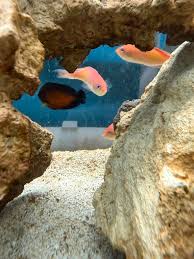
For thousands of years, dragons (龙, Lóng) have played a significant role in Chinese mythology, spirituality, and travel traditions. Unlike the fearsome, fire-breathing dragons of Western legends, Chinese dragons are benevolent creatures associated with nature, wisdom, prosperity, and cosmic balance. Their presence is often linked to rivers, mountains, lakes, forests, and sacred travel destinations, making them an essential part of Chinese tourism and pilgrimage culture.
In China, many traditional travel routes follow paths influenced by dragon mythology. Whether visiting sacred mountains, exploring ancient temples, or traveling along famous rivers, many tourists and pilgrims seek out places where dragons are believed to reside, hoping to receive spiritual blessings and good fortune.
This article explores the deep connection between dragons and nature in Chinese travel traditions, highlighting sacred sites, cultural practices, and modern tourism trends inspired by dragon legends.
1. Sacred Mountains: The Dragon’s Spiritual Abode
Mount Tai (泰山) – The Azure Dragon’s Domain
Mount Tai, located in Shandong Province, is one of China’s most famous sacred mountains and a UNESCO World Heritage Site. It is often referred to as the domain of the Azure Dragon (青龙, Qīng Lóng), one of the Four Celestial Beasts in Chinese cosmology.
For thousands of years, emperors, scholars, and pilgrims have climbed Mount Tai to perform rituals and prayers to the dragon spirits. According to legend, dragons dwell in the clouds and mist surrounding the mountain, symbolizing immortality, wisdom, and divine power.
Huangshan (黄山) – The Mountain of the Hidden Dragon
Huangshan, also known as Yellow Mountain, is famous for its dramatic peaks, mystical clouds, and ancient pine trees. Many of its unique rock formations are named after dragon legends, including the famous “Dragon’s Head Peak”.
Tourists visit Huangshan to experience its otherworldly landscapes, believing that the dragon’s presence brings inspiration and enlightenment.
2. Rivers and Lakes: The Dragon’s Lifeline
The Yellow River (黄河) – The Cradle of the River Dragon
The Yellow River, often called “China’s Mother River,” is deeply associated with river dragons (河龙, Hé Lóng). According to legend, the Yellow River Dragon protects the land, ensuring balance between floods and droughts.
Travelers who follow the Yellow River’s ancient trade and cultural routes often encounter shrines, dragon temples, and folk festivals dedicated to river dragons.
West Lake (西湖) – The Home of the Water Dragon
West Lake, located in Hangzhou, is surrounded by poetic landscapes and historical sites connected to dragon mythology. According to legend, a golden dragon sleeps beneath the lake’s surface, protecting the region’s prosperity.
Tourists visit West Lake for its serene beauty, cultural history, and dragon-themed pavilions, making it one of China’s most iconic travel destinations.
3. Feng Shui Travel: Following the Dragon’s Energy
Dragon Veins (龙脉, Lóng Mài) – The Flow of Earth’s Energy
In Chinese geomancy (风水, Fēng Shuǐ), Dragon Veins (龙脉, Lóng Mài) are believed to be powerful energy lines that connect sacred landscapes. Many traditional travel routes follow these paths, leading tourists to places where dragon energy is most concentrated.
Famous Dragon Vein Locations for Travelers
- Beijing’s Forbidden City (故宫): Designed according to Feng Shui, with dragon energy running through its layout.
- Xi’an’s Terracotta Army (兵马俑): Built along an ancient Dragon Vein to protect the emperor’s afterlife.
- Guilin’s Karst Mountains (桂林): A region where dragon-shaped hills form a landscape of mystical energy.
Many modern travelers seek out these locations to experience the harmony of nature and dragon energy.
4. Dragon-Inspired Festivals and Cultural Tourism
Dragon Boat Festival (端午节) – Racing with the River Dragons
One of China’s most famous traditional festivals, the Dragon Boat Festival (端午节, Duānwǔ Jié), is celebrated with dragon boat races along major rivers and lakes. The festival is deeply connected to the legend of Qu Yuan (屈原) and the belief that dragon spirits guide the boats through the water.
Many tourists visit China during this time to witness the vibrant dragon boat competitions, folk performances, and cultural rituals.
New Year Dragon Dances – Bringing Prosperity
During Chinese New Year, dragon dances (舞龙, Wǔ Lóng) are performed in cities, villages, and tourist attractions to ward off evil spirits and attract good fortune. These performances draw thousands of visitors, both domestic and international, who come to experience China’s rich dragon traditions.
5. Modern Tourism Trends: Dragons in Eco-Tourism and Spiritual Retreats
Eco-Tourism: Protecting the Dragon’s Natural Habitat
In recent years, eco-tourism in China has embraced dragon mythology as a way to promote environmental conservation. Many nature reserves and national parks highlight their connection to dragon legends, attracting tourists who seek both adventure and cultural experiences.
- Jiuzhaigou Valley (九寨沟): Known as “The Fairyland of the Dragon King,” this UNESCO site is famous for its crystal-clear lakes and dragon-shaped waterfalls.
- Mount Emei (峨眉山): A sacred Buddhist mountain where dragons are believed to guard ancient temples.
Spiritual Retreats: Seeking the Wisdom of the Dragon
Many travelers visit Taoist and Buddhist monasteries located in dragon-associated landscapes to seek spiritual enlightenment, meditation, and inner peace.
Popular retreat locations include:
- Wudang Mountains (武当山): A Taoist sanctuary where martial artists train in dragon-style kung fu.
- Putuo Island (普陀山): A Buddhist retreat where the Dragon King’s daughter is worshipped.
These destinations offer tourists an opportunity to connect with nature, dragon mythology, and ancient spiritual wisdom.
Conclusion
The connection between dragons and nature in Chinese travel traditions reflects the country’s deep-rooted beliefs in harmony, balance, and spiritual energy. Whether exploring sacred mountains, following dragon-shaped rivers, or attending cultural festivals, travelers continue to seek out places where dragon legends are alive.
As China’s tourism industry evolves, the enduring presence of dragons in nature and travel remains a powerful symbol of the nation’s history, mythology, and spiritual traditions. Whether as guardians of sacred sites, protectors of rivers, or symbols of good fortune, dragons continue to shape the way people travel and experience China’s natural wonders.










